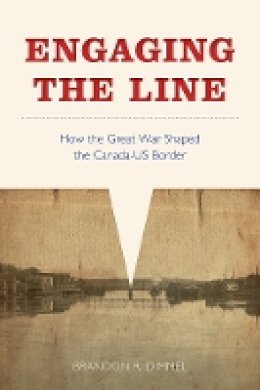
Engaging the Line: How the Great War Shaped the Canada–US Border
Brandon R. Dimmel
For decades, people living in adjacent communities along the Canada–US border enjoyed close social and economic relationships with their neighbours across the line. The introduction of new security measures during the First World War threatened this way of life by restricting the movement of people and goods across the border. Many Canadians resented the new regulations introduced by their provincial and federal governments, deriding them as “outside influences” that created friction where none had existed before. Engaging the Line examines responses to wartime regulations in several border communities, including Windsor, Ontario; Detroit, Michigan; and White Rock, British Columbia. This book brings to life the repercussions for these communities and offers readers a glimpse at the origins of our modern, highly secured border by tracing the shifting relationship between citizens and the state during wartime.
Product Details
About Brandon R. Dimmel
Reviews for Engaging the Line: How the Great War Shaped the Canada–US Border
From Chapter 2 of Engaging the Line
Engaging the Line is a significant contribution to North American border studies. It reveals that the intensity of Canadian nationalism varied by location, which in turn indicates Canada’s differing regional histories and diversity and duration of settler experience. Its exploration of the regional nuances of “crossing culture” also adds to our understanding of the impact of war on the home front.
Keith Regular
The Ormsby Review
Engaging the Line blends political, social, and cultural history in order to assess how global developments in the first decades of the twentieth century reshaped the boundary and relationship between the USA and Canada.
Holly M. Karibo, Oklahoma State University
International Journal
Engaging The Line is a smart, crisp account of the First World War’s impact on border life. The topic is not merely timely but compelling … Engaging The Line is likeable and meticulously researched, a warm account of an era we left behind.
Holly Doan
Blacklock’s Reporter
